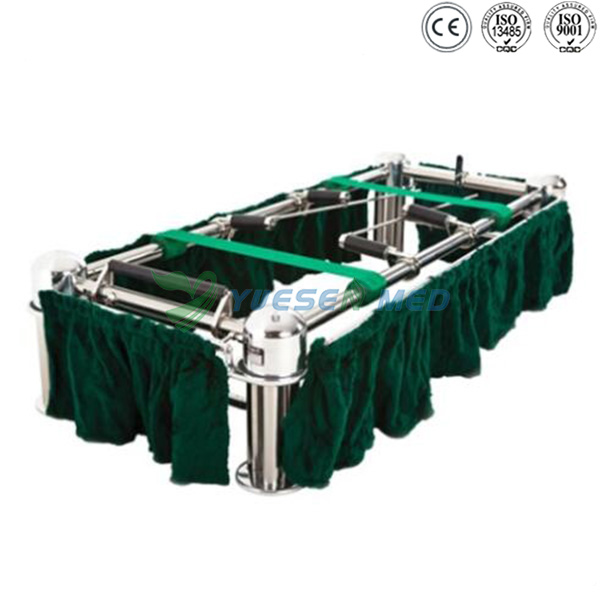Title: Exploring the Distinctions: 3-Part vs. 5-Part Hematology Analyzers
Introduction:
Hematology analyzers play a crucial role in diagnosing various blood-related disorders and monitoring overall health. Among these analyzers, the 3-part and 5-part hematology analyzers stand out as two common options. While both serve the same purpose, they differ in their capabilities and functionalities. In this comprehensive guide, we delve into the dissimilarities between these two types of analyzers, their advantages, limitations, and the factors to consider when choosing between them.
Understanding Hematology Analyzers:
Before delving into the specifics of 3-part and 5-part hematology analyzers, it's essential to grasp the fundamental functions of these instruments. Hematology analyzers are automated laboratory devices designed to analyze blood samples. They provide essential information about the cellular components of blood, including red blood cells (RBCs), white blood cells (WBCs), and platelets. Additionally, they measure various parameters such as hemoglobin concentration, hematocrit levels, and differential leukocyte counts.
3-Part Hematology Analyzer:
A 3-part hematology analyzer, as the name suggests, provides a basic analysis of blood samples by examining three main components: RBCs, WBCs, and platelets. Here's a closer look at its features and functionalities:
Basic Parameters: 3-part analyzers measure parameters such as hemoglobin concentration, hematocrit levels, and total leukocyte count.
Differential Leukocyte Count: While 3-part analyzers can provide a total leukocyte count, they may not offer a detailed breakdown of different types of white blood cells.
Cost-Effectiveness: 3-part analyzers are generally more affordable than their 5-part counterparts, making them suitable for smaller laboratories with limited budgets.
Rapid Analysis: Due to their simplified design, 3-part analyzers often provide quicker results, which can be beneficial in high-throughput settings.
Despite their limitations in providing detailed leukocyte differentials, 3-part hematology analyzers remain valuable tools in many clinical settings, particularly for routine blood tests and screening purposes.
5-Part Hematology Analyzer:
In contrast to 3-part analyzers, 5-part hematology analyzers offer a more comprehensive analysis of blood samples by examining five main components: RBCs, WBCs, platelets, and a detailed leukocyte differential count. Here are the key features of 5-part analyzers:
Comprehensive Analysis: 5-part analyzers provide a detailed breakdown of different types of white blood cells, including neutrophils, lymphocytes, monocytes, eosinophils, and basophils.
Enhanced Accuracy: The ability to perform a differential leukocyte count enables 5-part analyzers to provide more accurate and clinically relevant information, especially in diagnosing and monitoring certain hematological disorders.
Advanced Technology: 5-part analyzers often incorporate advanced technologies such as flow cytometry and impedance-based methods to achieve higher accuracy and precision in cell counting and differentiation.
Increased Complexity: Compared to 3-part analyzers, 5-part analyzers are more complex in design and operation, requiring additional maintenance and calibration.
Despite being more expensive and complex, 5-part hematology analyzers are indispensable in laboratories that require comprehensive blood analysis for diagnosing complex hematological conditions and monitoring patient health over time.
Factors to Consider When Choosing Between 3-Part and 5-Part Analyzers:
When selecting a hematology analyzer for a laboratory or clinical setting, several factors should be taken into account:
Testing Requirements: Consider the specific testing needs of the laboratory, including the volume of tests performed, the complexity of cases encountered, and the desired level of detail in blood analysis.
Budget Constraints: Evaluate the initial investment cost as well as the ongoing maintenance expenses associated with the analyzer, keeping in mind the long-term financial implications.
Space and Resources: Assess the available space in the laboratory and the technical expertise of the staff to operate and maintain the analyzer effectively.
Workflow Efficiency: Consider the impact of analyzer speed and turnaround time on laboratory workflow and patient care, aiming to achieve optimal efficiency without compromising accuracy.
Future Growth and Expansion: Anticipate future growth and changes in testing requirements, selecting an analyzer that can accommodate evolving needs and technological advancements.
Conclusion:
In conclusion, both 3-part and 5-part hematology analyzers play essential roles in modern healthcare settings, offering valuable insights into the cellular components of blood. While 3-part analyzers provide a basic yet cost-effective solution for routine blood tests, 5-part analyzers offer a more comprehensive analysis, particularly in diagnosing complex hematological disorders. When choosing between these analyzers, laboratories must consider factors such as testing requirements, budget constraints, and workflow efficiency to make informed decisions that align with their specific needs and priorities. By understanding the distinctions between these analyzers, healthcare professionals can optimize blood analysis processes and deliver high-quality care to patients.
This comprehensive guide has explored the differences between 3-part and 5-part hematology analyzers, their features, advantages, limitations, and factors to consider when choosing between them. Whether you're setting up a new laboratory or upgrading your existing equipment, selecting the right hematology analyzer is crucial for ensuring accurate and efficient blood analysis.
Manufacturer Support: Consider the reputation and reliability of the manufacturer, including the availability of technical support, training resources, and software updates. Choosing a reputable manufacturer with a track record of providing excellent customer service can ensure smooth implementation and ongoing support for the hematology analyzer.
Regulatory Compliance: Ensure that the selected analyzer meets regulatory requirements and standards set forth by relevant regulatory bodies, such as the FDA (Food and Drug Administration) in the United States or CE (Conformité Européenne) marking in Europe. Compliance with regulatory standards is essential for ensuring the accuracy, safety, and reliability of test results.
Integration with Laboratory Information Systems (LIS): Evaluate the compatibility of the hematology analyzer with existing laboratory information systems to facilitate seamless data management, result reporting, and integration with electronic health records (EHRs). Integration with LIS can streamline workflow and improve efficiency in data handling and analysis.
Quality Control and Assurance: Assess the analyzer's built-in quality control features and capabilities for ensuring the accuracy and precision of test results. Quality control measures, such as calibration protocols, internal quality control checks, and proficiency testing, are essential for maintaining the reliability and integrity of laboratory testing processes.
User Interface and Ease of Use: Consider the user interface design and ease of operation of the hematology analyzer, taking into account the user experience for laboratory technicians and healthcare professionals. Intuitive software interfaces, touchscreen displays, and user-friendly features can enhance productivity and reduce training time for operating the analyzer.
By carefully considering these factors and weighing the advantages and limitations of 3-part and 5-part hematology analyzers, laboratories can make informed decisions that optimize blood analysis processes and improve patient care outcomes. Whether prioritizing cost-effectiveness, comprehensive analysis, or workflow efficiency, selecting the right hematology analyzer is essential for meeting the diverse needs of modern healthcare settings.
In summary, the choice between 3-part and 5-part
hematology analyzers depends on various factors, including testing requirements, budget considerations, laboratory resources, regulatory compliance, manufacturer support, integration capabilities, quality control measures, and user interface design. By evaluating these factors and aligning them with the specific needs and priorities of the laboratory, healthcare professionals can select the most suitable hematology analyzer to support accurate diagnosis, monitoring, and management of hematological conditions.



